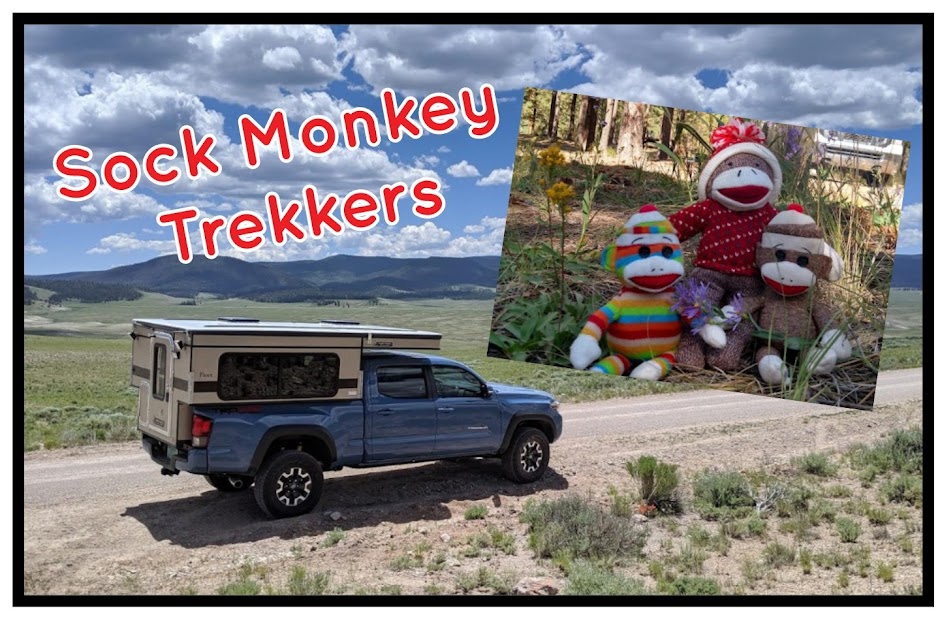 |
| Merry Christmas from the Sock Monkey Trekkers |
The more we discover and explore the fulltime RV lifestyle through other blogs, the more we realize how many options are out there for living simply and saving money. You certainly don't have to fullltime to live simply. But, so many fulltimers have embraced this way of life and are great examples for us all.
The realization that we want to live in an RV fulltime has made us think about each and every thing we buy, especially for our house. Will it fit in the RV? If not - do we really need it for the next 6.7 years? It is amazing how you can cut your spending if you just stop and really consider - do I need this?
We cut the cord to our cable and satellite. Greg built a home-made antenna using a block of wood and coat hangers that allows us to capture over the air, local stations. We added a TIVO and Roku and were able to cut our monthly tv related bill to under $30 per month. I don't count our Amazon Prime (we paid $79, but it will go up to $99 when our annual renewal date rolls around) because I primarily see the fee as being for the 2 day shipping and the discounted or free books and music.
 |
| Greg's cool homemade antenna. Works GREAT! |
Thanks to a post from Nina of
Wheeling It - I discovered the DIY deodorant. We love the clean, fresh, hops-free deodorant. So, I thought I would go whole hog! I now am making our shampoo, cream rinse, hair gel and hair spray. It took me about 2 hours the first time to make everything because I had to read and re-read different recipes to decide on what worked for us. I love this new regime. It is much cheaper and healthier and cleaner (pun intended).
I saw a special years ago on
60 minutes dealing with the glasses manufacturing monopoly of Luxottica. Greg and I both have to wear glasses, specifically bifocals. Like everyone else, we have seen the prices skyrocket over the years. The last pair of bifocals I bought was over $500 out of pocket and I have insurance to help cover some of the costs. RIDICULOUS! I decided there had to be a solution.
 |
| I can see clearly with my new glasses! |
I went on an internet search and looked into alternatives. I know many full-timers head down to Mexico - but I wanted a solution that could be achieved from anywhere. Then I found
Zenni Optical. I was very intrigued. Zenni is a California company that built a lab in China where the lenses and frames are manufactured. This would have bothered me in the past. But, after watching the 60 minutues show and understanding more about frame manufacturers, I wasn't so bothered about glasses being made in China on European manufacturing equipment. Zenni was founded in 2003 by two scientists in the San Francisco Bay Area.
I went to the website. Uploaded my prescripton and my face on their Frame Fit program and started shopping. The Frame Fit program lets you see the glasses on your face. You can even compare and contrast a number of different frames and see multiple versions of yourself side by side. A little scary - but actually kinda fun. I found a frame that I thought would work and placed my order. It took about a couple of weeks to get that first pair of glasses because of a hold up in customs.
But, I fell in love. I paid $112.85 for a no-line, progressive bifocal pair of glasses. They fit perfectly and the prescription was right on. Next, I bought a second pair of prescription sunglasses. I have always wanted a pair, but at the prior $400-$500 price tag was way too expensive. The no-line, progressive bifocal sunglasses cost me $151.85. What a deal! Two glasses for half of what I paid for one pair. The second pair arrived in about 10 days.
I spread the word at work and to friends. Doesn't everyone want to save money? Greg recently purchased a pair of prescripton reading glasses for $25.85. Several friends have also bought glasses and all of us have had good experiences. If you need glasses - consider checking out Zenni.
 |
| My new prescription sunglasses from Zenni |




















